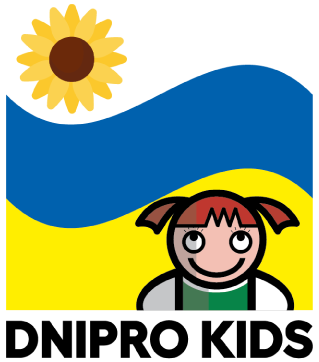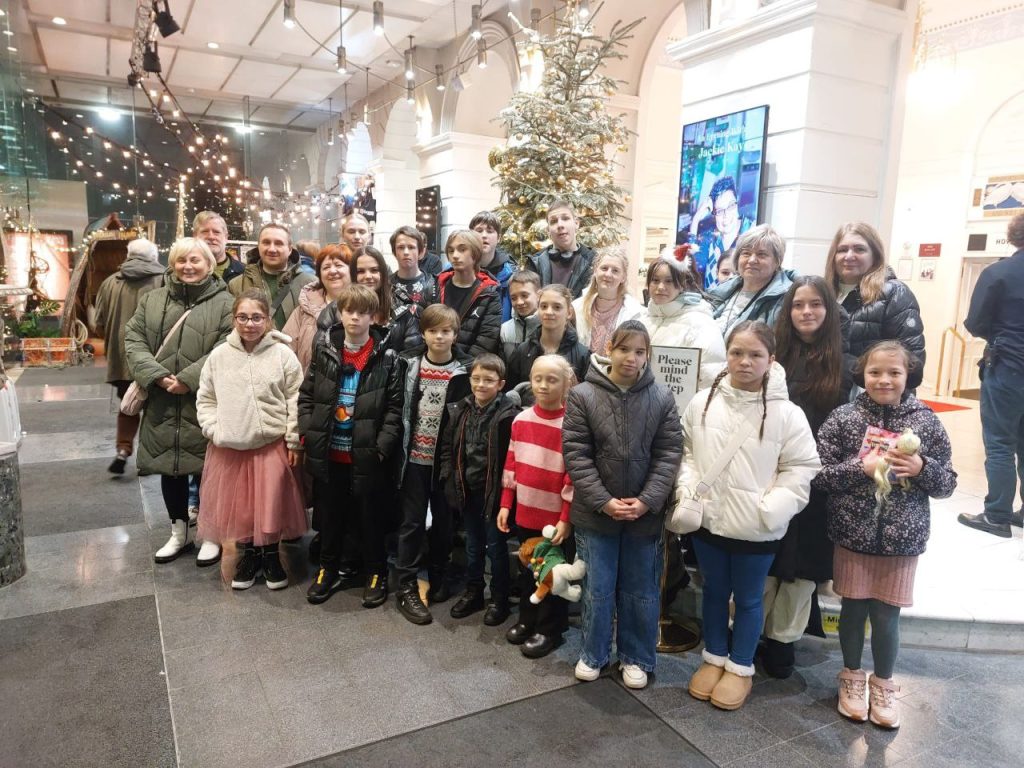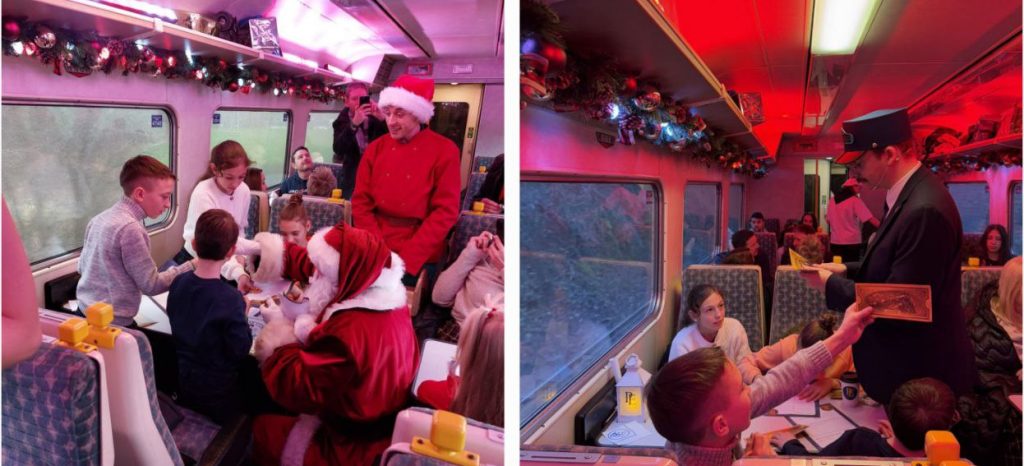September Trip
As mentioned in the August Update, the kids from the Tabachnaya and Topolinaya orphanages were treated to a 3 day trip to Sevastopol and the Crimean Peninsular. The trip couldn’t have come at a better time as the following week the two orphanages were due to merge as part of an ongoing initiative to cut down the number of large orphanages. The trip toSevastopol turned out to be the perfect opportunity for the children from the two orphanages to get to know each other a little better in a neutral environment .. and a nice green, scenic and sunny environment at that.

Sevastopol has the second largest port in Ukraine, and is also home to the Russian Naval Fleet, so has many wartime and maritime museums. The city was founded in the late 18thcentury by Scot, Thomas McKenzie, who was a serving Admiral in the Russian Navy. The Crimea, and Sevastopol itself, has always been a strategic stronghold for the area and played a major part for control of the area during the Crimean War and World War II. During World War II the city managed to hold off German forces for almost 10 months, and successfully slowed down the (eventually failed) advance to the Russian oil fields in the Caucasus.
Day 1
Due to the distance from Dnipropetrovsk to Sevastopol the trip had started before the sun had even had a chance to rise. Sleepy, but excited, the children bundled themselves onto the bus and we were off. Once on the long road to Sevastopol, and with the sun slowly rising, the guide for the trip started providing the children with information about the places we would be passing en route, and the history of each of the regions we would be passing through.

The drive to Sevastopol had been estimated at 8 hours but slow traffic (and maybe one or two extra unscheduled stops) meant that the drive ended up closer to 10 hours. The tour guide was excellent though, and her story telling helped hugely to keep the kids amused on the trip. Ira had also loaded up lots of snacks and drinks before we left so energy levels were well topped up on the lunch stops. Eventually the journey was nearly complete and a wave of exciting flowed through the kids as we descended into Sevastopol.
The bus headed to the centre of the city and straight to a pre-booked restaurant for a nice meal and refreshments prior to a guided tour of the centre of Sevastopol. The kids dived of the bus and Ira and the teachers had their work cut out to gather them together and get them into the restaurant.
After supper the tour guide took control of events and led the group through the city centre and down towards the harbour area. Her knowledge of Sevastopol and its history was pretty impressive, and she even managed to hold on to the attention of the majority of the kids .. even more impressive.
Guided tours tend to see an immediate gender split as they progress. The girls group together and look for every photo opportunity that they can, whereas the boys seem duty bound to test their teachers patience to the full as they do they best they can to end up in Accident & Emergency!
The lengthy bus journey had meant that everything was running an hour or so behind schedule, which actually went in our favour as the kids were treated to an amazing sunset towards the end of the guided tour.
The hostel that we were booked to stay at was about a 40 minute drive from Sevastopol, so we left the city and headed northwards. I was initially a bit disappointed that the tour company had booked us into accommodation so far away, but this soon changed when we arrived. The “hostel” was actually a fairly new holiday camp, and although it was dark by the time we arrived the kids were getting pretty excited about it. The hotel was full of bright and exciting colours, the rooms were perfect for the kids .. and, even in the pitch black, the swimming pool looked pretty good.
But it was the end of a long and tiring day, and the kids were ready for sleep .. so the exploring would need to wait until tomorrow …
Day 2
Day 2 of the trip allowed everyone to view the splendour of the modern holiday camp in nice sunshine. The kids that were up and out their beds sharp were already out exploring the grounds. It was quite warm enough for an early morning dip, but it was possible to soak up a little bit of sunshine on the sun loungers!
There was also a little bit of spare game time before breakfast, then onto the bus for the first excursion of the day.
The first place we visited was the village of Balaklava. A place made famous due to the knitted headwear that was sent to the British troops that were fighting in the Crimean War. Apart from being a beautiful little village, and harbour area, Balaklava is steeped in history and famous for fortresses and battles. It is a base for the Ukrainian Coast Guard.
The first stop for us though, was the former base of the Soviet Union’s Black Sea Submarine Fleet.
This submarine base was a top secret, heavily guarded, location for the Soviet Union during the “Cold” War. It was a large complex tunnelled into the mountain itself, with underwater entrances for the submarines to arrive and depart from. There was sufficient space inside the base, and out of view from everyone, for up to 14 submarines! There was even a “dry” dock inside the mountain for repairs to be carried out on two submarines at a time. Not even the Balaklava villagers, across the small bay, knew what was going on. And with nuclear missiles also stored in the complex it’s probably just as well.
After Independence from the Soviet Union in 1991 the base was slowly decommissioned, and the last submarine finally left in 1996. It was left empty for a few years and fell into a state of disrepair, with many items getting either stripped or stolen. Thankfully though, the Ukrainian government intervened and in 2002 decided to turn it into a museum, with it finally opening to the public in June 2003.
Without a doubt, this was the most interesting excursion of the whole trip. The kids were bowled over by the submarine museum and listened intently as the guide walked them round the complex explaining the history of the base and the function of the rooms.
Many of the storage rooms have been turned into exhibition rooms and boasted some very interesting displays and war time memorabilia. Of course the nuclear war heads are long gone, but there were still some old missiles and torpedoes on show.
There was even a fighter jet sitting in the courtyard outside the museum!
After the visit to the museum there was a guided tour of Balaklava and its beautiful harbour.
And to finish off the Balaklava excursion there was a walk up the adjacent hills to the old medieval fort that overlooks the town. This particular fort was held by the British, during the Crimean war, and may even have received a visit from Florence Nightingale.
After all the walking the kids were ready for some lunch, at a local restaurant, and then it was back on to the bus and on to the next venue .. the ancient Greek city of Khersones.
Khersones formed part of an ancient Greek colony that settled in the Crimean peninsular and the city was built around the 6th century BC. The ancient city was an important trading post and as such came under rule from various civilisations during the course of its life. The Greeks used it through till the 1st century BC before it came under the rule of the expandingRoman empire. If came under Byzantine (Eastern Roman Empire) rule around 900AD and was converted to Christianity. Khersones survived right through to the middle ages before finally being destroyed during Tatar invasions in the 14th century. There is also a Scottish connection to the ancient city, with Saint Andrew honoured as the saint that brought Christianity to the city.
Admittedly the visit probably wasn’t quite as exciting as the morning visit to Balaklava, but the kids still found it interesting, and it was a perfect day for an outside museum.
By teatime the kids were back at the holiday camp, and with a bit of daylight to spare. It was also an opportunity to present the kids with t-shirts and footballs donated by generous sponsors back home. Needless to say, the boys were kicking the footballs around straight away!
As night fell, the campsite turned on the large screens and put on some cartoons and animations. The dance animation being the most popular!
Some took the dancing very seriously … some even finished with a dip in the swimming pool .. but they all agreed that the holiday camp was the best ever!
Day 3
As this was the last day of the trip the kids had to be up nice and early so they could have a morning excursion before the long journey home. So it was a bit of a mad rush to pack up there belongings, get their bags on the bus, demolish a big breakfast, and then onto the bus ready for the excursion.
The final excursion was to the historical town of Bakhchusarai. It was following the Tatar invasions of the 14th century that the town began to form, and eventually became a fortress holding the main palace for the Khans of the Crimean Tatar region. Despite an 18th century invasion by the Russian empire the town remains the cultural centre for the Crimean Tatars and has a very Turkish feel to it.
The purpose of this excursion though was to pass through the town and head for the famous cave homes of the first Tatar inhabitants of the area. Prior to the formation of the city many of the Tatars built their homes into the side of the mountain and there was a guided tour up the steep paths leading to these historical dwellings.
The guided walk was a lot further, and a lot more tiring, than I think most had been expecting, and the guide’s occasional stops were quite welcome .. but once at the top of the “mountain” it was clear why this walk was such a popular one. The views were astounding!!
And, of course, it’s always easier going back down a mountain … especially when you know there’s a nice meal waiting for you when you get to the bottom.
Unfortunately this meal marked the end of the Crimean trip for the kids, and it was time to head back to the bus for the final journey back to Dnipropetrovsk. However, there was a buzz of excitement on the bus (for the first few hours at least) as the kids discussed with one another their best bits of the trip. As the journey progressed though, all the walking was finally starting to catch up on everyone and it was a very sleepy bus load that finally crawled its way into the orphanage under the cover of darkness.
The feedback since, from kids and teachers alike, was that the trip was a huge success and was thoroughly enjoyed by the kids who will remember it for many years to come. And all have offered a huge “Thank You” to the Dnipro Appeal, and its generous sponsors, for helping to make it happen.
Visit the Facebook page and add Dnipro Kids to your friends list.
http://www.facebook.com/dnipro.kids
Yours,
Steven Carr,
Dnipro Appeal Committee












































































